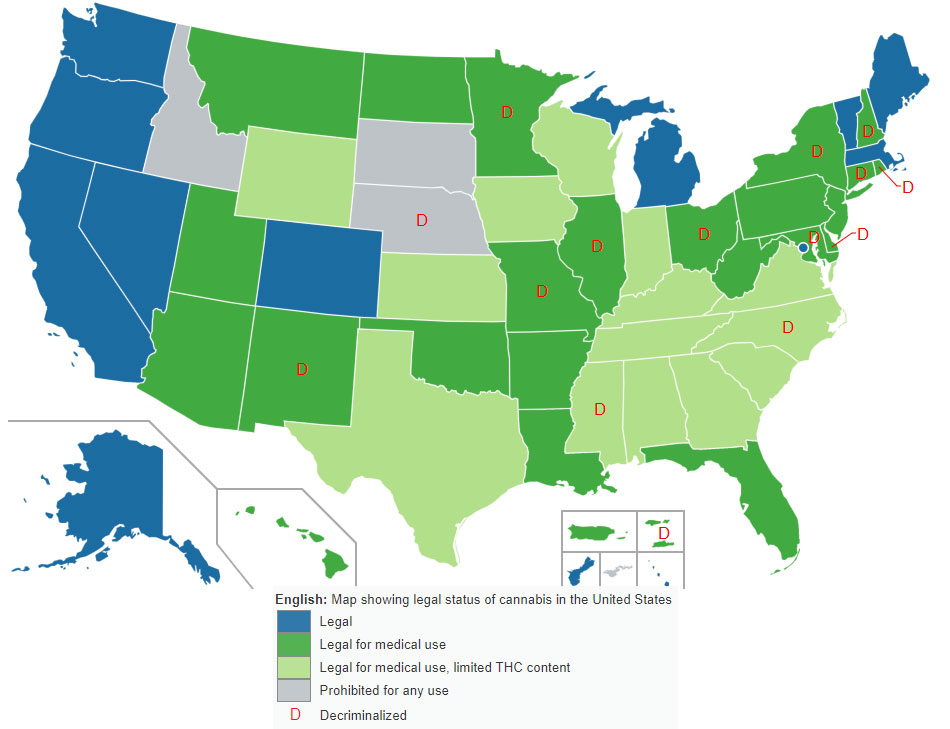Nurses Must Help Patients Use Cannabis Safely
Regardless of their own feelings or biases about cannabis, nurses must recognize that their patients are using it and help them to access the drug safely, Eloise Theisen, MSN, RN, AGPCNP-BC, of the Radicle Health Clinician Network in Walnut Creek, CA, said during a session on Saturday, April 13, 2019, at the ONS 44th Annual Congress in Anaheim, CA (https://congress.ons.org/). Many patients with cancer are using cannabis and are looking to their healthcare providers for information on how they can use it to reduce their symptoms, she said.

All but three U.S. states have now legalized cannabis use in some form. Ten states and the District of Columbia have legalized it for either medical or nonmedical use, whereas 23 states and several territories have legalized it for medical use only. Cannabis with limited tetrahydrocannabinol (THC) content is legal for medical use in another 13 states. In addition, 13 states have decriminalized cannabis use. Under the federal Controlled Substances Act, however, cannabis remains a schedule I drug that is deemed to have “no currently accepted medical use.”
Theisen, who is president-elect of the American Cannabis Nurses Association, identified several characteristics of the more than 5,000 patients whom she has treated with cannabis.
- Their average age is 76, and 85% are female.
- 90% have never used cannabis before.
- 45% use cannabis to treat pain.
- 45% use it for sleep issues.
- New patients fear psychoactivity and do not want to smoke the drug.
Patients need sources of accurate information about medical use of cannabis, Theisen said, because of widespread misleading consumer information. A study published in 2018 found that 76% of the claims made about medical cannabis on popular websites were inaccurate and based on low-quality evidence, and only about 3% were written by a healthcare professional.
In July 2018, the National Council of State Boards of Nursing published guidelines for nursing care of patients using medical cannabis that identified six principles of essential knowledge for nurses:
- The current state of legalization of medical and adult-use cannabis
- The medical cannabis program in the nurse’s jurisdiction
- The endocannabinoid system; the receptors, ligands, and enzymes; and the interactions among them
- Cannabis pharmacology and the research associated with the medical use of cannabis
- Safety considerations for patient use of cannabis
- Ability to approach patients without judgment regarding their choice of treatment or preferences in managing pain and other distressing symptoms
Federal law has not always banned the medical use of cannabis. Prior to 1937, approximately 600 medical products containing cannabis were commercially sold.
The active ingredients in cannabis were poorly understood until the mid-1960s, when researchers in Israel identified THC as the active ingredient and discovered other important chemical compounds in the plant. More recent research further characterized THC as part of the brain’s endocannabinoid system and a partial agonist of two cannabinoid receptors, CB1 (predominantly found in the nervous system, connective tissue, gonads, glands, and organs) and CB2 (primarily found in the immune system).
In 2004 researchers identified a condition known as clinical endocannabinoid deficiency that may explain the therapeutic benefits of cannabis in treatment-resistant conditions such as migraine, fibromyalgia, and irritable bowel syndrome.
